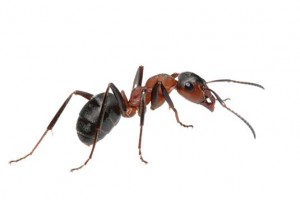Gaining control can often pose a challenge; these don’ts from other pest management professionals might help.
Don’t hesitate to get your customer involved. Sometimes the only ant species my customers are interested in is the dead species. Customer education, talking to customers about what type of ants we are treating for, and what we noticed during the service call builds value in the services we provide. It allows the customer to know we’re doing more than just spraying pesticides. — Scott Campbell, President, Abode Pest Solutions, Sanford, Fla.
Don’t cut your price just to secure the job. Sell the benefits of your product or service plan. Charge enough to cover the cost of all likely services and make a profit. Emphasize what the client will receive for the money they invest with you. — Keith Olesh, General Manager, Assertive Pest Management, Riverside, Calif.
Don’t neglect check-ups on problem accounts. A few days after a visit, call the clients to see how things are going. That way, they won’t call you to say what you did didn’t work. That’s just good customer relations. — David McMillian, Owner, Pest Arrest, Greer, S.C.
Don’t apply anything without asking the customer. Sometimes kids or pets are around, and you don’t want to apply materials where they can come into contact with it. Also, make sure customers know where you’re putting the materials so they don’t wipe it up. Tell them how long to leave the material there, and how long it will take until they no longer see ants. — Linda Short, Owner, The Bug Lady, Ballwin, Mo.
Don’t skip the exterior inspection. A customer might call for a problem on the inside, but ants often trail in from the outside. Technicians who look outside will find that’s where the ants are coming from, and will be able to trail them to the nest and get rid of the problem — instead of having to return. — Randy Darrah, Pest Control Technical Trainer, Slug-A-Bug, Melbourne, Fla.
Don’t treat on rainy days. Look at the label — most states won’t allow you to apply pesticides when it’s raining. That’s a violation if you do. If you apply pesticides to a wet surface, they will be diluted. They won’t have time to dry, they won’t stick, and then they will be gone. Would you paint a picnic table when it’s raining? Of course not. You’re going to wait until it’s dry, and then you’re going to paint it. — Ronald Keeler, Owner, Protect Pest Services, Raymond, Maine
Don’t hesitate to call in somebody else for another set of eyes. Whether it’s another technician from your company, a distributor or a supplier, especially if you’re not finding a problem — don’t think you know it all. — Brett Lieberman, Owner, My Pest Pros, Fairfax, Va.
Don’t forget to ask lots of questions. If a customer isn’t home, but leaves a key or the door unlocked, it’s critical — whether you’re the technician or the office staff answering the phone — to find out where and what time of day they’re seeing ants. If they are home, ask the kids or the grandkids. They’re at ant level and can show you things that the adults, or you, have never seen. — Doug Foster, President, Burt’s Termite & Pest Control Inc., Columbus, Ind.
Don’t assume each situation will have the same resolution or require the same products and maintenance for control. Rather, you should base treatment on the source of the problem, the level of infestation, the customer’s living conditions and maybe the type of chemicals the customers might have used on their own. If the problem persists, take a new approach or use different types of products. The best policy is honesty. If you feel it’s something you can’t control immediately, explain that it might take a few battles, but we will win the war. — Darrell Seelinger, Owner, Oakland Pest Control, Macomb, Mich.
Don’t assume clients know what to expect. If we don’t manage expectations well, we will get a call from the clients the next day saying, “We still have ants.” You need to tell them to wait because the product won’t make the ants go away in one night. Educate clients about what you are doing, why, and what to expect.
— Brett Lieberman, Owner, My Pest Pros, Fairfax, Va.
Don’t shy away from explaining to the customer exactly what you did. Every time I finish a job, I bring the customers outside and show them where I treated. Inside, I’ll show them where I put my control devices or what I’ve found. I’m there to provide a service, to take care of their problems. — Ronald Keeler, Owner, Protect Pest Services, Raymond, Maine
Don’t underestimate the ant population. As part of a thorough inspection, consider that many ant species’ colonies can be big. What we, or the client, see in activity above ground is only a fraction of the problem. Most ants stay in the nesting area and help with housekeeping, child rearing, etc. Don’t focus on eliminating the visible activity. Instead, direct your efforts toward the source, where 95 percent of the activity is occurring. Future generations of ants will cause far more problems than the current ones. — Keith Olesh, General Manager, Assertive Pest Management, Riverside, Calif.
Don’t hurry. If you take your time, do things right, and check your work — even though it seems slower at first, it’s actually the fast way. You won’t have to return, sometimes multiple times, to fix things. Sometimes we get in a hurry because we find one trail of ants, but there might be multiple colonies or multiple trails of the same colony. Be thorough. Just because customers are seeing ants in the kitchen doesn’t mean there aren’t ants in the bathroom or in one of the bedrooms. —Doug Foster, President, Burt’s Termite & Pest Control Inc., Columbus, Ind.
You can reach Managing Editor Diane Sofranec at dsofranec@northcoastmedia.net or 216-706-3793.

Leave A Comment